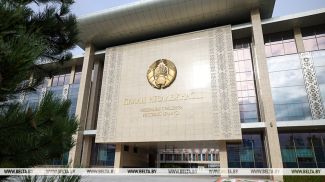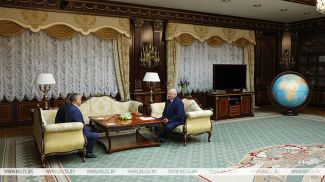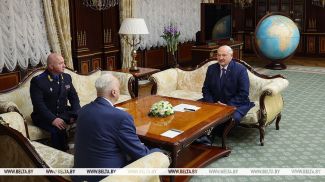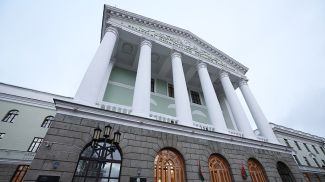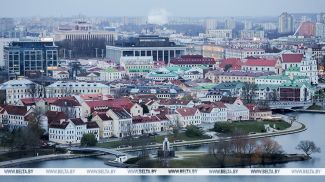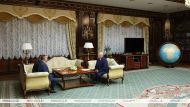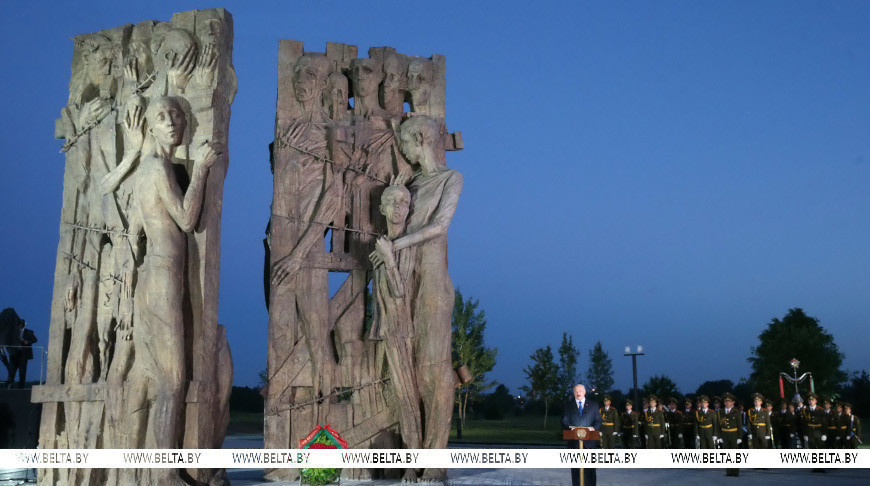
News of the story
"After the Fact: Lukashenko’s Decisions"
The Trostenets Memorial Complex was opened on 22 June 2015. A requiem rally “The Gates of Memory” was held on that day. A year earlier, Aleksandr Lukashenko took part in the ceremony of laying a time capsule at the site. Back then the president noted that “the memorial complex should become a place of pan-European significance, exposing the brutality of the Nazi policy towards the civilian population of Europe”. In this episode, we will tell you who was exterminated in the Trostenets concentration camp, where the ashes of people killed by the Nazis are kept and what the information center in the memorial complex will look like.
How did the memorial complex in Trostenets come into being?
A 200-hectare labor camp was set up near the village of Maly Trostenets in late April 1942. The prisoners lived in barracks and worked in inhumane conditions. Aleksandr Lukashenko took part in the requiem rally “The Gates of Memory” in June 2015. He recalled that the concentration camp near the Belarusian village of Maly Trostenets was the largest concentration camp in the occupied territory of the Soviet Union.
“It is heart-wrenching to even imagine the scale of the atrocities and crimes against humanity committed by the Nazis. People of different ethnicities and religions were brought here by train. Those were not only our compatriots, but also people from other European countries - Poland, Germany, Austria, Czechoslovakia. Mass executions took place in the Blagovshchina forest, and bodies were burned in the Shashkovka forest.”
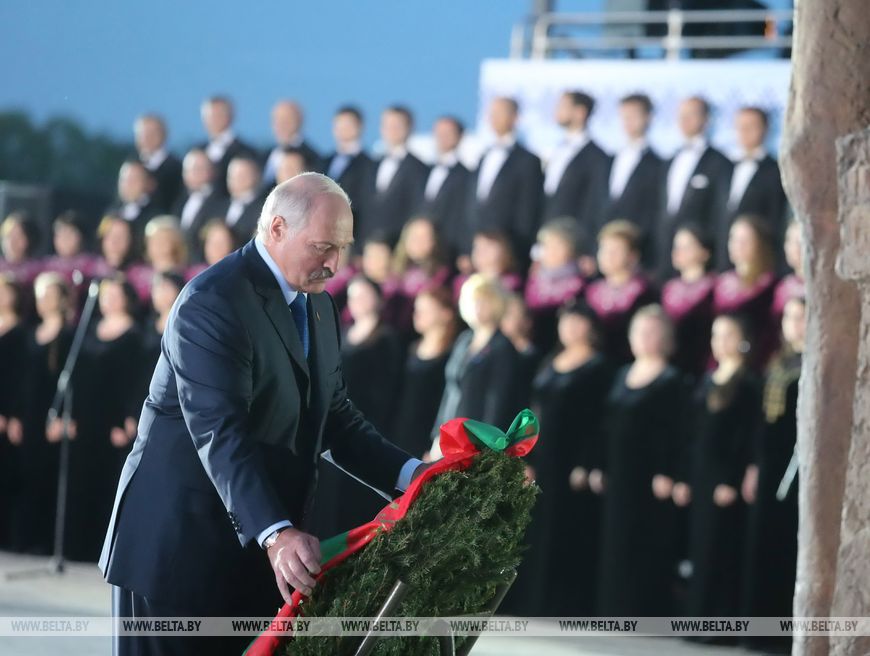
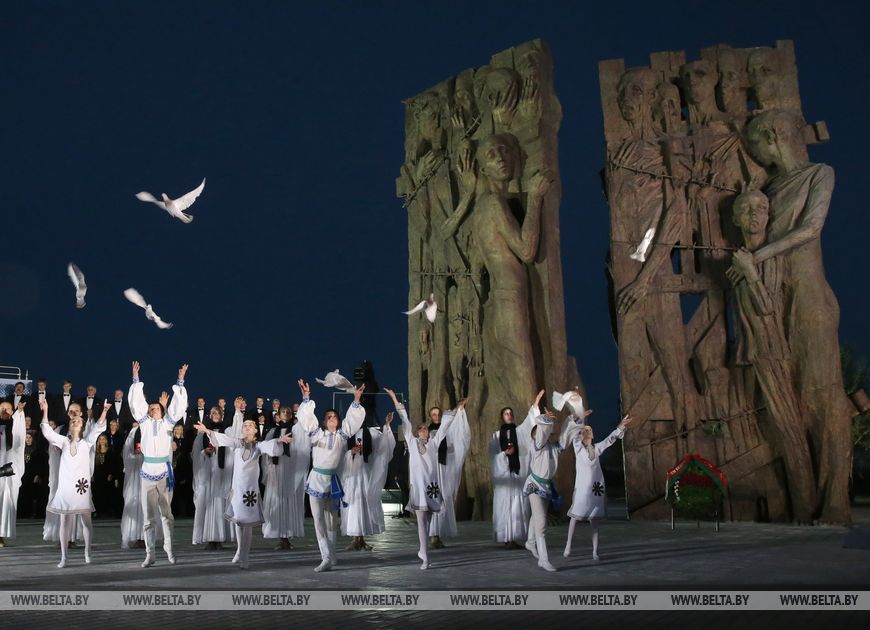
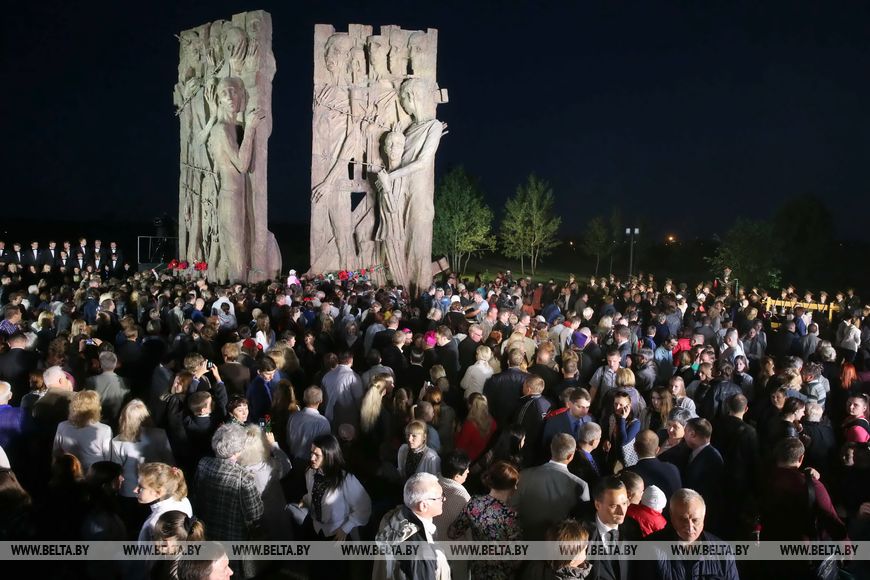
“The foundations of the surviving barracks were restored. The camp itself was set up on the premises of the former Karl Marx collective farm. The facilities of the farm were re-purposed for the concentration camp,” said Aleksandr Gostev, Director of the Belarusian Cultural Center of Spiritual Revival.
How many people were murdered in the concentration camp near Minsk?
According to official estimates, more than 206,000 people died in Trostenets. Some recent estimates put the death toll at 546,000 ...
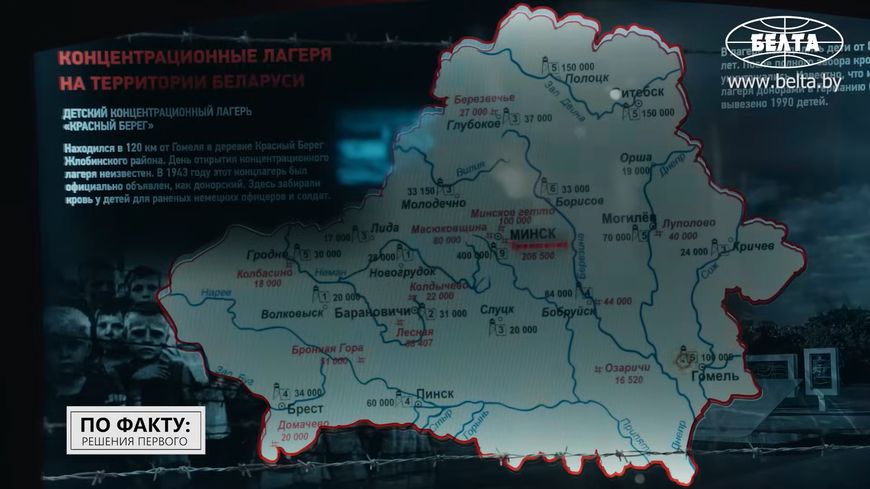
“This is the fourth biggest concentration camp in the world and the largest in the USSR in terms of the number of victims. More than half a million people are believed to be exterminated here. The fascists turned this place into a death factory killing people on an industrial scale,” said Aleksandr Gostev.
Work has been underway for ten years to establish the names of the concentration camp victims. This work is being done by local historians, schools, and public associations. Three days before the liberation of Minsk, the Nazis destroyed all the documents. They left only ashes of the prisoners' remains.
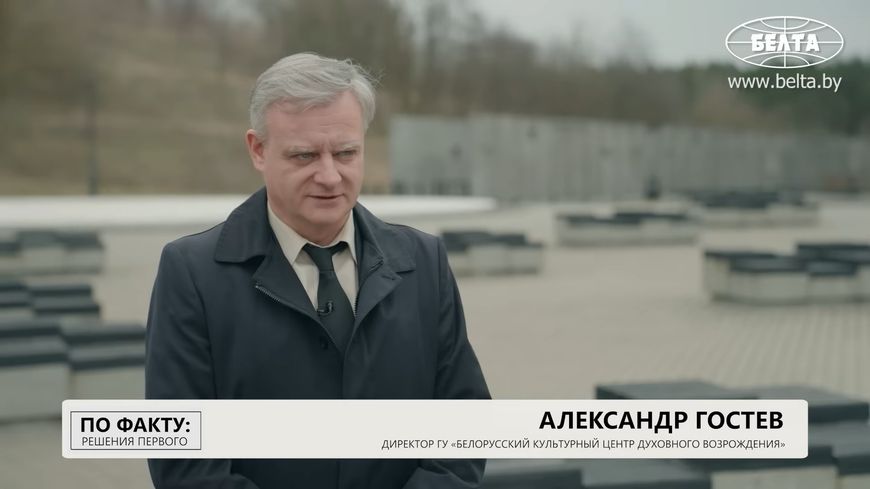
“About several dozen prisoners managed to escape. The two most well-known of them are Nikolai Valakhanovich and Stepanida Savinskaya. They described all the atrocities that took place here. Currently, we are studying various materials and archival documents. We are looking for mentions of Trostenets. We gathered around 1,000 names already,” Aleksandr Gostev said.
How will the Trostenets information center operate?


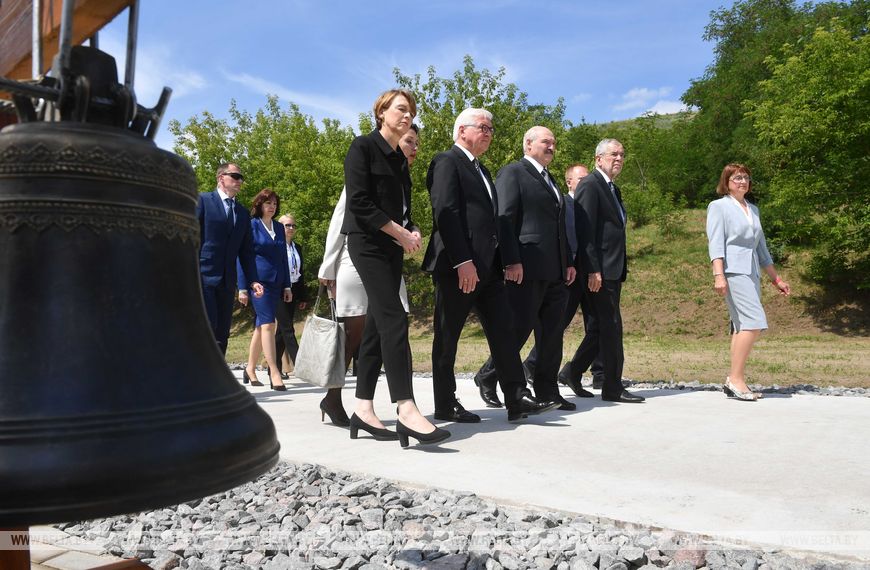
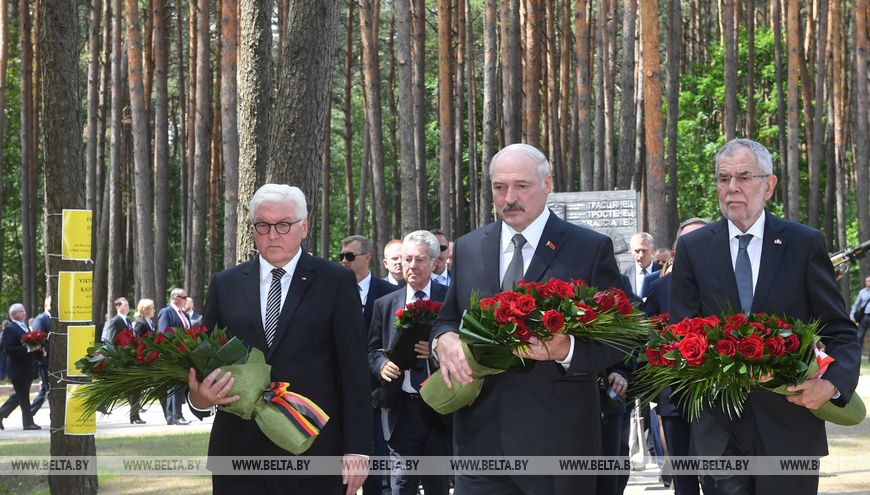

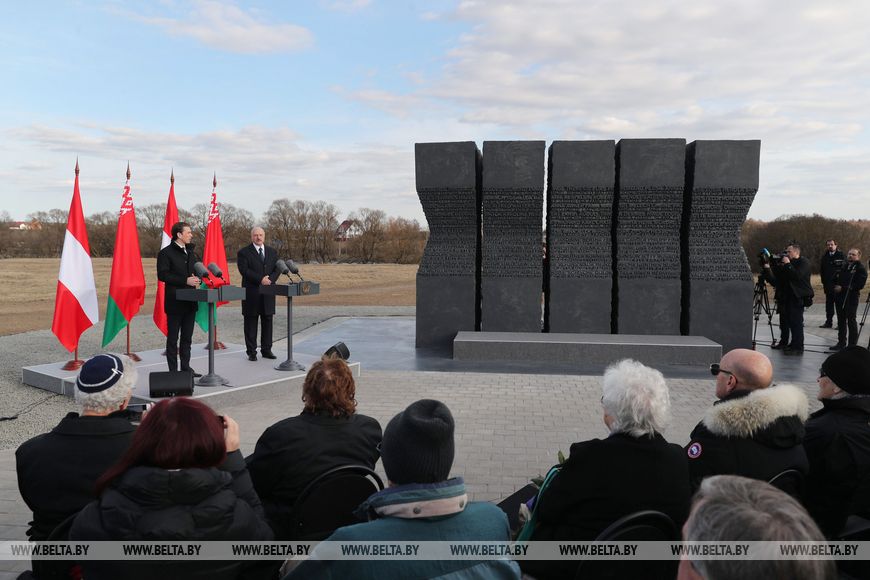
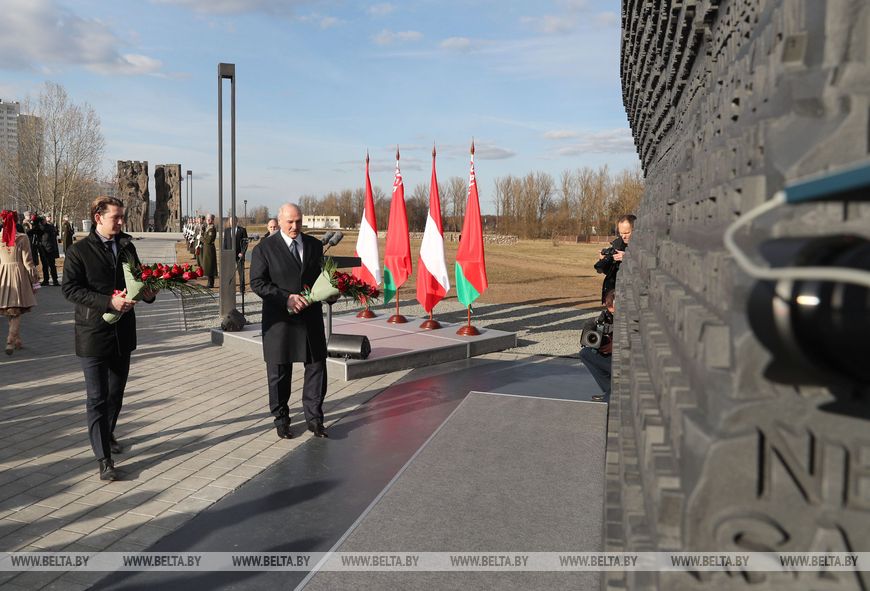
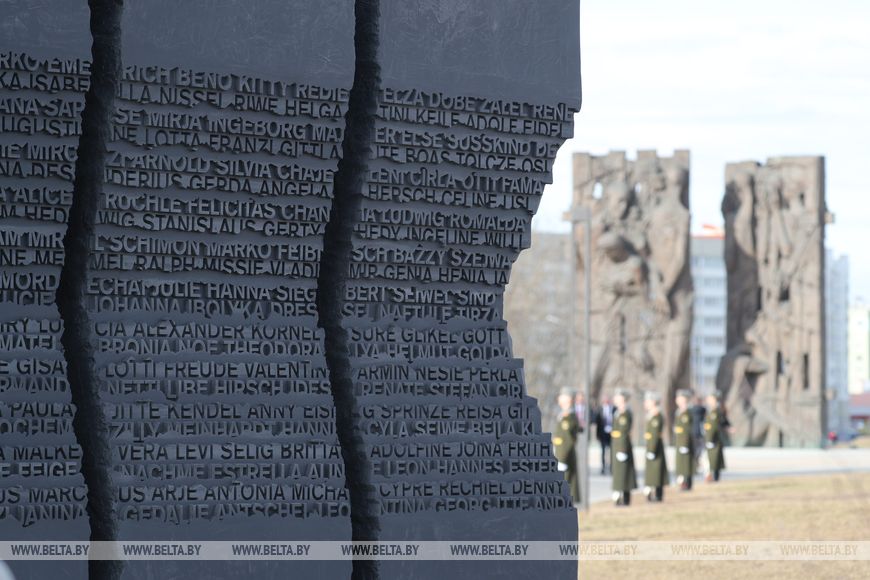
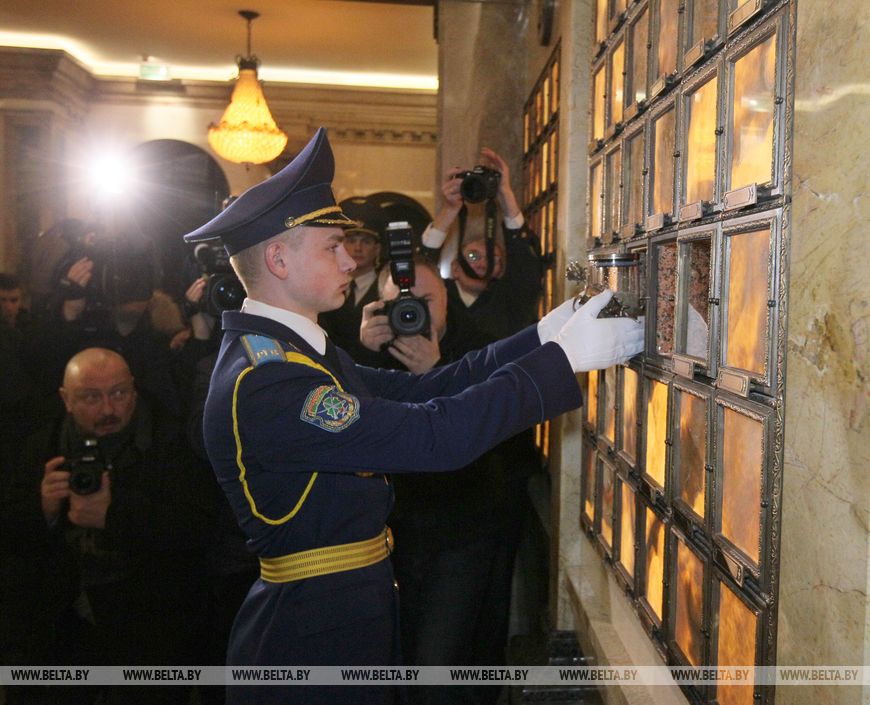
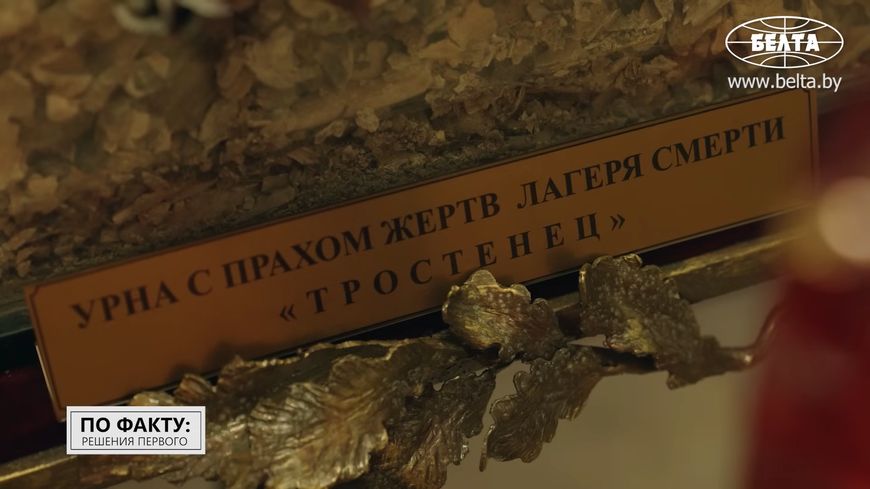
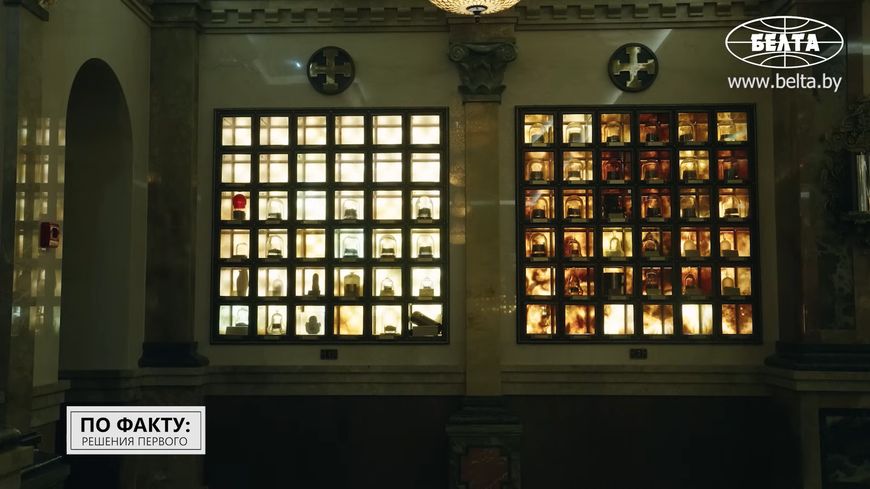
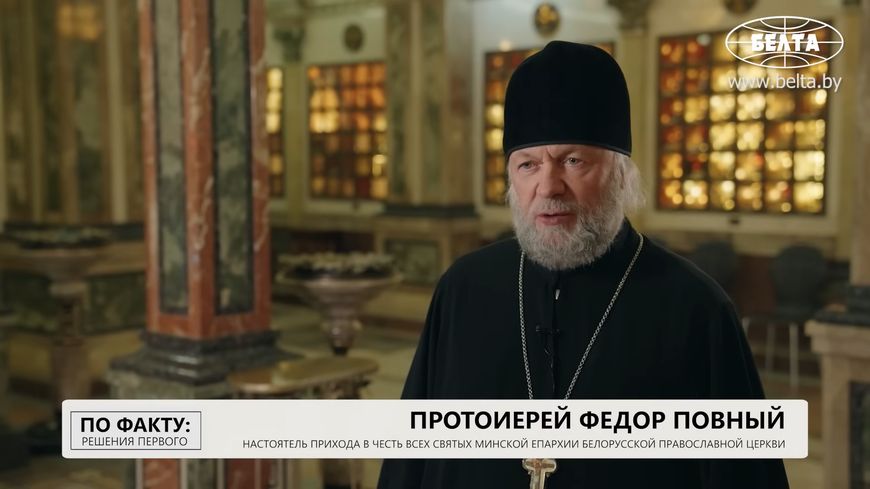
How did the memorial complex in Trostenets come into being?
A 200-hectare labor camp was set up near the village of Maly Trostenets in late April 1942. The prisoners lived in barracks and worked in inhumane conditions. Aleksandr Lukashenko took part in the requiem rally “The Gates of Memory” in June 2015. He recalled that the concentration camp near the Belarusian village of Maly Trostenets was the largest concentration camp in the occupied territory of the Soviet Union.
“It is heart-wrenching to even imagine the scale of the atrocities and crimes against humanity committed by the Nazis. People of different ethnicities and religions were brought here by train. Those were not only our compatriots, but also people from other European countries - Poland, Germany, Austria, Czechoslovakia. Mass executions took place in the Blagovshchina forest, and bodies were burned in the Shashkovka forest.”



The first stage of the Trostenets Memorial Complex was built on the site of the labor camp. It is here where Belarus' tallest bronze sculptural composition, the Gates of Memory, is located. The design of the composition was chosen in a national competition. The jury selected Konstantin Kostyuchenko's design out of twenty entries. The young sculptor was consulted by Mikhail Savitsky, People's Artist of the USSR, Hero of Belarus, who went through three concentration camps.
“The foundations of the surviving barracks were restored. The camp itself was set up on the premises of the former Karl Marx collective farm. The facilities of the farm were re-purposed for the concentration camp,” said Aleksandr Gostev, Director of the Belarusian Cultural Center of Spiritual Revival.
How many people were murdered in the concentration camp near Minsk?
According to official estimates, more than 206,000 people died in Trostenets. Some recent estimates put the death toll at 546,000 ...

“This is the fourth biggest concentration camp in the world and the largest in the USSR in terms of the number of victims. More than half a million people are believed to be exterminated here. The fascists turned this place into a death factory killing people on an industrial scale,” said Aleksandr Gostev.
Work has been underway for ten years to establish the names of the concentration camp victims. This work is being done by local historians, schools, and public associations. Three days before the liberation of Minsk, the Nazis destroyed all the documents. They left only ashes of the prisoners' remains.

“About several dozen prisoners managed to escape. The two most well-known of them are Nikolai Valakhanovich and Stepanida Savinskaya. They described all the atrocities that took place here. Currently, we are studying various materials and archival documents. We are looking for mentions of Trostenets. We gathered around 1,000 names already,” Aleksandr Gostev said.
How will the Trostenets information center operate?
An information center will open near the Gates of Memory at the memorial complex. It will feature a permanent exposition. Its creators will use modern technology to show what happened in the concentration camp. The project will take two years to complete. Funding is currently being sought.
“The center will also display archaeological artifacts discovered during the construction of the memorial complex. The National Academy of Sciences has handed over many items, including personal belongings of the prisoners. Those were children, the elderly, people from various countries and of various faiths. All of this will be shown at the center. We will also create a wall of memory” Aleksandr Gostev stated.

He also stressed that the names that the center is searching for will be recorded in an electronic book of memory.
What Lukashenko said in Trostenets during the visit of the presidents of Austria, Germany
“We represent different nations, different faiths. We live in different countries. Politicians and public figures, we stand here because we remember the tragic lessons of the common history. We know how human lives were devalued by the ideology of Nazism, which turned the world upside down with crimes unparalleled in their cruelty” Aleksandr Lukasenko said during a requiem rally commemorating the victims of Nazism in Trostenets in 2018.
According to him, death camps were the most incomprehensible phenomenon of World War Two. A new commemorative object was erected in Blagovshchina at the site of one of the largest death camps. “Jews from Berlin, Bremen, Vienna, Dortmund, Prague, and other European cities were forced to walk the path of death here. Ashes of Belarusian civilians, underground resistance fighters, partisans, and Soviet POWs rest here, too,” the president noted. “Butchers driven by the anti-human Nazi ideology were hell-bent on exterminating everyone who didn't fit their perverse concept of the new world order.”
Aleksandr Lukashenko together with Federal President Frank-Walter Steinmeier of Germany and Federal President Alexander Van der Bellen of Austria visited the Trostenets Memorial Complex on 29 June 2018. The requiem rally was held at the Blagovshchina memorial cemetery. It was the site of mass extermination of innocent people.



“People thought they were being relocated to new lands in Eastern Germany”
In November 1941, trains carrying Jews from Germany, Czechoslovakia and Austria started arriving in Minsk.
“People were deceived. They were transported in comfortable trains, but in Volkovysk they were moved to freight trains that are on display here. They thought they were being relocated to new lands in Eastern Germany,” Aleksandr Gostev explained, noting that copies of these trains are on display at the memorial complex. “This is the Square of Paradox, where people began to realize what was going to happen to them. Then came the Square of Death, where people were executed.”
The square has benches and resembles a train station. Here, people were stripped of their clothes and all valuables: first their belongings, then their lives.

“Trenches were prepared in advance: 100 meters long and 3 meters deep. Initially, people were brought in cars, stripped and shot. Later, gas vans were used: gas was pumped into the vehicle's cabin. The deceased were transported to these trenches and buried,” Aleksandr Gostev said.
During the requiem rally on 29 June 2018, the Belarusian head of state stressed that with this memorial Belarusian architects managed to demonstrate the fine line between life and death, which separates living human beings from a pile of ashes. He extended sincere words of gratitude to the presidents, politicians and public figures, representatives of religious organizations, leaders and residents of European cities, all people who are not indifferent and whose joint efforts preserve the memory of the victims of Trostenets.
Who was exterminated in the Trostenets concentration camp?
In 2019, Aleksandr Lukashenko and Austrian Federal Chancellor Sebastian Kurz inaugurated the monument to the victims of Nazism - Array of Names in the Trostenets Memorial Complex. More than 10,000 Austrian citizens were exterminated in the concentration camp. Aleksandr Lukashenko emphasized: “The monument stands as a symbol of the desire of new generations to learn about the tragic fate of their ancestors and to preserve memory of them.”
The head of state noted that the monument was a reminder of how far aggression overpowering common sense, and exorbitant political ambitions, anti-scientific and anti-human theories could take people.
“May this stone symbol become an eternal reminder of the fact that peace is very fragile and human life is priceless. Our sacred duty is to pass on memory about that war to the descendants, to tell the future generations not to repeat mistakes of the past,” Aleksandr Lukashenko said.



The Battle of Kursk was one of the decisive battles of the Great Patriotic War. The Germans decided that it was time to destroy the evidence of their crimes. The prisoners were forced to dig out the bodies of the dead from the ditches. They were burnt and their ashes were buried again. The ashes of martyrs of different faiths, status and wealth are kept in the crypt of the Church of All Saints in Minsk.
“The heart feels everything. When you come up to this sarcophagus, it starts beating faster and the legs go numb. All confessions have the concept of martyrdom. The Blagovshchina forest and the Shashkovka furnaces were devouring people of various nationalities and religions. This is an appeal to God about everyone who suffered and who deserves this prayer. No one will be forgotten. Before the eyes of eternity we are united in our grief and compassion,” said Archpriest Fyodor Povny, senior priest of the Church of All Saints of the Minsk Diocese of the Belarusian Orthodox Church.
Where the ashes of the people killed in Trostenets by the Nazis are kept
A capsule with earth and an urn with ashes of the victims of the Trostenets concentration camp were laid in the crypt of the Church of All Saints in 2016. It is the memory of hundreds of thousands of innocent victims.



“For me it is especially important that the ashes are kept in the church crypt, as the ashes of my ancestors might also be there. They were burned in the Trostenets concentration camp three days before the liberation of Minsk,” Archpriest Fyodor Povny, said. “Now they are close to me. Of course, we will never know whose ashes are buried in the crypt. What we do know is that God has everything sorted out. He grants grace to be buried next to him only to the worthy.”
The importance of preserving historical memory has long been emphasized in Belarus from the tribunes of all levels. Every year we have fewer and fewer witnesses of those terrible events. Monuments and memorials remind us, the descendants, of the atrocities that took place on the Belarusian land.
“The descendants of the executioners shift the blame on us, distorting the facts. They try to make us forget what happened so that their conscience would not torment them, and they could continue the unfinished undertaking of their grandfathers. If we forget, we devalue and betray the great Victory. We ourselves will end up in the same barns and camps where the Nazis tortured and burned our ancestors,” Archpriest Fyodor Povny said.
There are always fresh flowers at the foot of the monuments in Trostenets. Belarusians honor the memory of the victims of Nazism. The memorial complex has become a silent symbol of the truth about the events of the Great Patriotic War.

“Let this monument serve to bring people together in the name of the ideals of goodness and mercy. Let it remind us, our children and grandchildren about the importance of protecting peace and public accord. Let it prevent us from forgetting what heinous tragedies can stem from the ideas of Nazism, intolerance and intention to impose somebody’s will using the power of weapons,” the head of state said at the Gates of Memory commemorative event to mark the opening of the Trostenets Memorial in June 2015.





